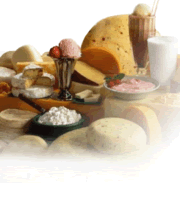

Pioneer Cooking
When you think of a cast iron Dutch oven, what comes to your mind? Pioneer cooking? Stews over the open fire?
Of coarse both are true, but they are still very much in use today and as for the Dutch oven, the possibilities are endless.
Dutch ovens can be used for frying, baking, boiling, and steaming as well.
Purchasing Your Dutch Oven
When purchasing your Dutch oven, make sure the lid has a raised ridge.
This is to hold your heat source, which will be briquettes.
This will help you to reach the proper temperature needed for whatever cooking you are wanting to do , with the exception of boiling or frying.
In which case you would want all the heat on the bottom.
Heating Fundimentals
If you are planning on baking, you need more heat on the top than on the bottom.
Put one briquette on the bottom for every 3 on the top of the lid.
For preparing stews, use one on the top for every 4 on the bottom. When roasting, put briquettes on the top and bottom evenly.
Best Temperature
To understand the temperature and number of briquettes needed takes a little math.
Each briquette adds about 25 degrees of heat.
A good starting temperature is 350 degrees F.
To figure out how many briquettes to use, take the size of the oven in inches, and subract three to get the number of briquettes for under it, and add three to get the number of briquettes for the top.
Preparing To Cure Your Dutch Oven
Now that you understand the basics of using your Dutch oven you need to prepare or cure your oven before using it.
Some cast iron ovens have a protective covering which you will need to remove .
You will need to do some scrubbing with a non-abrasive scubber.
Once the covering is removed, rinse and dry the oven and then let it air dry.
Curing It
To cure your oven, pre-heat your kitchen stove to 350 degrees. Place the Dutch oven on the center rack, with the lid open slightly.
Allow it to heat slowly until it is too hot to handle. Apply a thin layer of salt free cooking oil with a clean cloth to the Dutch oven inside and out.
Place your oven back inside the stove with the lid slightly open. Bake your oven for about an hour.
.Repeat
After baking , allow the Dutch oven to cool slowly.
When it is cool enough to handle, repeat the oil again the same as before and bake again.
When cool enough apply a third layer of oil, but this time it is ready for use.
Preparing your Dutch oven in this way prevents rust and makes for much easier cleaning as well
Cleaning
To clean your oven after use, scrape it out, add warm water, without soap, and heat it in the oven until the water is almost boiling.
For any food that sticks a little, use a non-abrasive scrubber.
Protect your Dutch oven again by warming it in the stove, applying a thin coating of oil and letting it cool. Its now ready for storage.
| About The Author Val and Robin Shortt are experienced campers and own three outdoor
websites For more tips like these and to
register for their Free newsletter visit: |
All rights reserved, gotoBest.info
